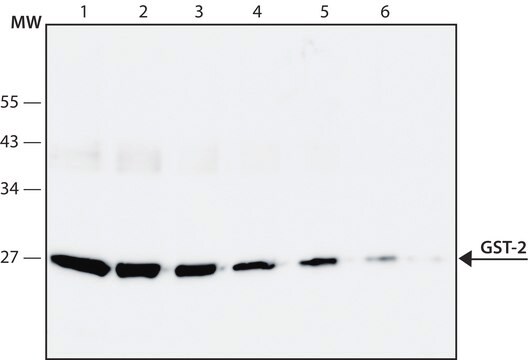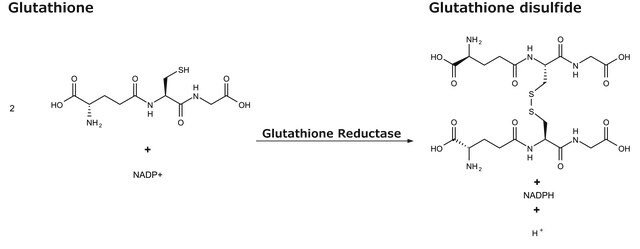G6511
Glutathione S-Transferase from equine liver
lyophilized powder, ≥25 units/mg protein
Synonyme(s) :
GST, Glutathione R-transferase, Glutathione S-alkenetransferase, Glutathione S-alkyltransferase, Glutathione S-aralkyltransferase, Glutathione S-aryltransferase, Glutathione S-epoxidetransferase
About This Item
Produits recommandés
Source biologique
equine liver
Niveau de qualité
Forme
lyophilized powder
Activité spécifique
≥25 units/mg protein
Poids mol.
45-50 kDa
Composition
Protein, ≥60%
Température de stockage
−20°C
Description générale
Actions biochimiques/physiologiques
- as a constituent of Tris buffer for incubation of human umbilical vein endothelial cells (HUVEC) with atracurium to assess the proliferation of HUVEC in the presence of atracurium
- as a component of GSB stock solution to determine GSB (glutathione S-bimane) conjugate fluorescence intensity in intact Arabidopsis cells
- as an enzyme standard in spectrophotometric assay to determine the activity of GST
Définition de l'unité
Forme physique
Remarque sur l'analyse
Purified and assayed by a modification of the method of Simons and Vander Jagt.
Enzymatic activities are based on the conjugation of reduced glutathione with a second substrate. The individual proteins generally have activity with more than one class of substrate.
Inhibiteur
Produit(s) apparenté(s)
Mention d'avertissement
Danger
Mentions de danger
Conseils de prudence
Classification des risques
Resp. Sens. 1
Code de la classe de stockage
11 - Combustible Solids
Classe de danger pour l'eau (WGK)
WGK 1
Point d'éclair (°F)
Not applicable
Point d'éclair (°C)
Not applicable
Équipement de protection individuelle
Eyeshields, Gloves, type N95 (US)
Faites votre choix parmi les versions les plus récentes :
Déjà en possession de ce produit ?
Retrouvez la documentation relative aux produits que vous avez récemment achetés dans la Bibliothèque de documents.
Les clients ont également consulté
Notre équipe de scientifiques dispose d'une expérience dans tous les secteurs de la recherche, notamment en sciences de la vie, science des matériaux, synthèse chimique, chromatographie, analyse et dans de nombreux autres domaines..
Contacter notre Service technique









